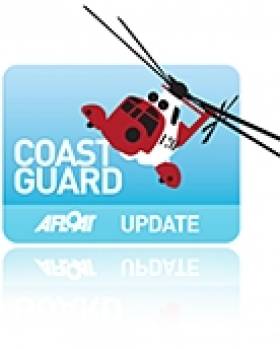Displaying items by tag: Lydstep
Woman Airlifted to Cliff Top
The woman who is not local to the area was walking with her 10 and 17 year old sons and had climbed some rocks near the caravan park but had become stuck. The children had managed to scramble to the top of the cliffs and raise the alarm. They were unable to help their mother.
The weather this afternoon has been south westerly winds force 5 – 7 with occasional rain with low visibility.
The Tenby Coastguard Rescue Team which has a cliff capability, and Tenby RNLI all weather lifeboat with its 'Y' boat was asked to turn out, and the Coastguard Sector Manager for Pembroke also attended. The RNLI inshore lifeboat was also launched.
Due to the prevailing weather and surf conditions a rescue helicopter – Rescue 169 - from RAF Chivenor was also scrambled.
Bob Peel, Coastguard Watch manager at Milford haven Coastguard said
"Once the woman's location had been determined and a Coastguard lowered to her on the rocks it was agreed amongst all the rescuing parties that with the 2 lifeboat crewmen and 1 cliff man from the Coastguard with the woman, it was probably too dangerous to evacuate everyone by boat.
"There is dense gorse and blackthorn at the top of the cliff is and it would have proved difficult to recover her safely for the cliff team, so the rescue helicopter was requested. By 4.00 pm the helicopter crew were winching the female and Coastguard up from the base of the cliff whilst the two crewmen returned to the all weather lifeboat by their Y boat. The woman was cold and shaken and had no need of medical attention.
"This is a salutary lesson in making sure that if you are in unknown terrain without the suitable climbing gear please don't attempt slippery cliff and rock faces, as inevitably rocky terrain can catch the unprepared out very quickly."





























































